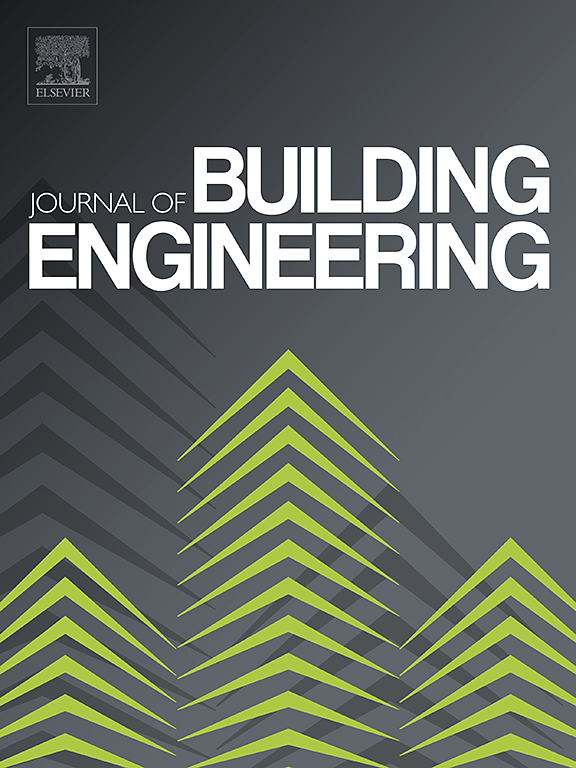Seismic performance of bolted beam-to-column composite joints with integrated precast edge composite hollow floor slab
IF 6.7
2区 工程技术
Q1 CONSTRUCTION & BUILDING TECHNOLOGY
引用次数: 0
Abstract
To enhance assembly efficiency, a new bolted beam-to-column composite joint with integrated precast edge composite hollow floor slab (BJHS) was proposed and its seismic performance tested were performed under column-end cyclic loading. Through test and finite element analysis (FEA), the failure mode, hysteretic curve, energy dissipation capacity, stiffness degradation and ductility of the joints were obtained, along with the bolt tension and slippage. Furthermore, BJHS was compared with traditional welded joints without floor slab and bolted beam-to-column composite joint with solid floor slab. The results indicated that the joint effectively dissipates seismic energy through bolt connection slip firstly, which prevents the premature plastic deformation in both the steel beam and the cantilever beam, thereby enhancing ductility and energy dissipation capacity. Increasing the thickness of the lower flange of the cantilever beam can avoid premature steel plate elongation or fracture at the bolt hole and improve the ductility and ultimate load-carrying capacity of the joint. Compared with the joint without slab, the BJHS had higher lateral initial stiffness and ultimate load-carrying capacity, but the damage of floor slab was aggravated after bolt connection slipping and the ductility was poor. Simplified calculation formulas for the slipping bending moment, yielding bending moment and ultimate moment of the joints without slab and with slab were proposed, which match well with test and FEA results. The influence of the floor slab should be considered in the subsequent structural design, and the problem of early cracking of cast-in-place concrete at the floor slab edge should be paid attention to.
求助全文
约1分钟内获得全文
求助全文
来源期刊

Journal of building engineering
Engineering-Civil and Structural Engineering
CiteScore
10.00
自引率
12.50%
发文量
1901
审稿时长
35 days
期刊介绍:
The Journal of Building Engineering is an interdisciplinary journal that covers all aspects of science and technology concerned with the whole life cycle of the built environment; from the design phase through to construction, operation, performance, maintenance and its deterioration.
 求助内容:
求助内容: 应助结果提醒方式:
应助结果提醒方式:


